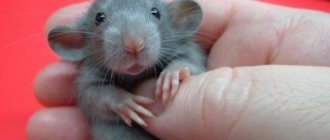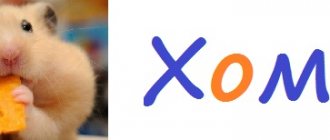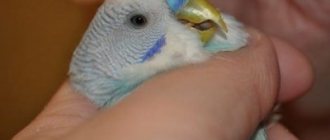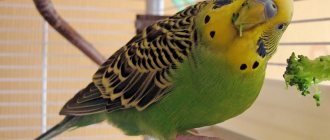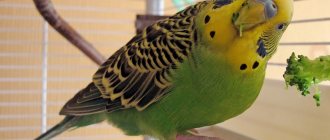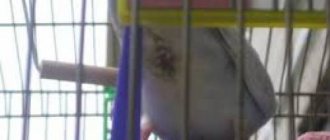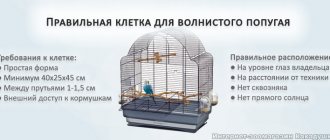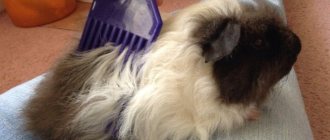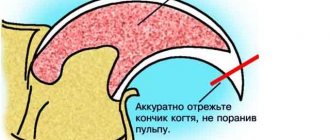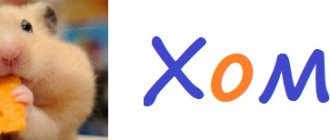Any pet requires care and close attention to itself. Parrots always require a special approach. Communication with the owner or relatives, good nutrition and good health are important for them.
One of the most important factors in the favorable existence of a feathered pet is the condition of its paws. Each owner of this animal should periodically trim its claws. This article is all about how to trim a parrot's claws, why it is necessary and methods of prevention.
Why do they cut their hair?
The life of budgies in the wild is very different from life in captivity. In nature, birds constantly fly, jump from branch to branch, sit on rough tree branches, so their claws themselves wear down as a result of friction against natural materials. In the cage, all the perches are smoothly polished and made of unnatural materials, when interacting with which the claws do not grind down. Small budgies, medium-sized cockatiels or large macaws need to have their nails trimmed.
Too long claws cause severe discomfort to your pet for many reasons:
- marigolds can cling to tissues on which the bird lands during flight, in which case the pet can dislocate a paw or twist a claw;
- the parrot feels pressure to move on flat surfaces and cannot sit comfortably on the perch;
- a pet can harm itself by trying to scratch its paws with overgrown nails;
- paws also cling to the bars of the cage.
In addition to natural growth, there are situations in which nail growth becomes too strong due to various diseases or problems in the body. Among these:
- liver diseases;
- curvature of fingers or other deformities associated with previous injuries;
- parasites (most often mites);
- poor living conditions;
- poor and unhealthy diet, which disrupts metabolism;
- lack of vitamins and minerals in the body.
Why does a parrot need tree branches?
- Firstly, a parrot constantly needs to chew something to sharpen its beak, and branches are best suited for this, since in their natural habitat parrots sharpen their beaks in this way. The branches have the necessary rigidity, which allows the parrots to effectively sharpen their key, keeping it in good condition.
- Secondly, tree branches provide parrots with useful substances and trace elements necessary for their life.
Tree branches are an environmentally friendly product that cannot be fully replaced with some artificial material, sold even in specialized stores. You need to worry about this and select branches of real trees for your parrot to give it the opportunity to sharpen its beak and receive the necessary amount of useful substances.
If you do not provide the parrot with tree branches, then it will begin to gnaw everything that gets in its way - wooden furniture, wallpaper, interior items and many other objects located in your house or apartment. It is unlikely that you will be happy if a parrot ruins the appearance of your home.
In addition, you will have to spend a significant part of your financial resources to restore the previous appearance of your interior, since sometimes parrots can misbehave very seriously. Moreover, a parrot can become seriously poisoned if it chews on varnished furniture. You should also not forget about this if a smart and savvy feathered companion has settled in your house.
In addition to the above, tree branches are necessary for perches, since they bring the parrot’s living conditions as close as possible to natural ones. The perches should be made from natural twigs, as this will only have a positive effect on the life and health of the parrot.
Sitting on a real twig will be much more comfortable and healthier. In addition, parrots are not averse to chewing on a perch, so if it is artificial, this can also lead to poisoning of the feathered pet.
In this regard, we can draw an analogy with a person - most likely you will enjoy walking in shoes made of genuine leather more than those made of artificial materials.
Preparation for the procedure
Before trimming a parrot's claws, you need to calm it down and set it in a positive mood. It is best to carry out the procedure at a veterinary clinic, but it is possible to do it yourself. To do this you will need special animal clippers. You can buy them at a veterinary store.
If this is not possible, then use a regular manicure set. But be sure to treat it with antiseptics before and after the procedure. You will also need cotton wool or cotton pads, a towel or gloves, and a product that stops the bleeding. During preparation, it is very important to determine exactly where the cut needs to be made, because birds have capillaries in their claws that cannot be touched. In order to do this, you need to shine a flashlight on your paw, so all the vessels will become visible.
Rules
There is blood flow inside the claw. If possible, you should not touch him.
If you accidentally touched it and started bleeding, it’s okay. Stop the bleeding using a prepared hemostatic agent. Dip the nail clipper into the disinfectant container and continue the procedure.
It is necessary to cut off the tip of the claw at a distance of 1.5-2 mm from the bloodstream.
Trimming the claws of an unaccustomed bird alone is quite difficult, so it is better for you to look for an assistant in advance.
Be extremely careful when cutting. The parrot constantly twitches its paws and another finger may accidentally get caught between the blades of the scissors.
What is good about a special nail clipper? The fact that it allows you to cut off only one claw, without the possibility that you will accidentally touch the neighboring finger.
How to trim claws correctly
To trim your pet's nails, grasp him in such a way that his wings are pressed against his back. To prevent bites, raise the animal's head. Bend your finger and cut off the excess length in one motion at an angle of 45 degrees from the floor. The procedure must be done carefully and so that your fingers do not get under the blade. It is best to treat your pet with a treat after this.
It is easy to determine whether the claws can be trimmed by looking at the parrot's gait. If it is uneven and your nails rest against the surface, then they cause discomfort. Usually the claws are cut when they reach 5 cm.
Is it possible to file down claws?
Trimming parrots' nails is not an easy task, especially if you have little experience in this matter. Many owners who have recently become owners of cute pet birds mistakenly believe that for the purposes of basic hygiene it is better to file the horny processes on the pets’ paws with manicure files rather than trim them. Any experienced parrot owner will confirm that this approach is extremely wrong, and a veterinarian or ornithologist will completely prohibit these rash actions.
Although filing can result in neater and less sharp claws compared to trimming them with nail scissors or tongs, this procedure is potentially dangerous for the bird and can cause negative consequences.
What to do if your parrot is injured
No matter how hard you try to do everything carefully, bleeding can happen in any case. For example, if the paw or the stratum corneum of the claw with capillaries in it is touched. In this case, you need to press a cotton swab moistened with hydrogen peroxide to the bleeding area. You can also use a manganese crystal or a special agent that stops the blood.
After the procedure, the feathered pet will be scared and stressed. To alleviate its condition, it is better not to contact it for a while, because it will feel that you are a source of danger.
Necessary tools for cutting
To trim your nails you will need:
- “ nail clipper ” (You can buy it at a pet store. If you suddenly can’t get it, you can use small scissors (manicure scissors are great) or nail clippers.);
- cotton wool;
- hemostatic powder or powder (If you can’t find it anywhere, then there should be at least a solution of hydrogen peroxide. It is not recommended to use potassium permanganate when bleeding, it can cause a burn. As a last resort, if you can’t get any powder, dilute a very weak solution of potassium permanganate. );
- gloves (Many people don’t use them. But trimming is stressful for a budgie, so it can bite hard. To avoid being bitten, trim your budgie’s nails while wearing gloves.).
Prevention
In any case, it is impossible to trim a parrot's claws without scaring him or causing discomfort. Therefore, you should generally avoid excessive regrowth. There are special devices for this in pet stores. Sharpeners for claws and beaks are made from chalk and other natural materials. With their help, pets can get rid of overgrown length themselves.
You also need to replace all the plastic elements in the cage with wooden ones. Their surface should not be smooth. It is best to add pebbles to the bottom of the home. It is necessary to let the bird fly around the apartment more often. It is very important that the pet’s perch is at least 15 mm thick, because it is by sitting on such a branch that the parrot can wear down its nails naturally.
Stress relief
Nail trimming is often a very stressful time for parrots. The bird may not only get scared, but also be offended by its owner. Therefore, you definitely need to prepare your bird’s favorite treat in advance. After pruning, the bird should be left alone for several days, no other procedures should be performed, and it should be protected from possible distress. Little birds (wavy birds, lovebirds) will definitely appreciate a gift in the form of a caged toy.
This is interesting: Favorable days for cutting hair in October
Beak diseases
As can be seen from the above, caring for a bird’s beak is not a difficult matter. But what to do if this organ in your pet begins to exfoliate? This may indicate that, most likely, the bird’s body lacks vitamins and microelements.
To correct the situation, you need to radically reconsider the bird's diet.
To cure a parrot, you need to start giving it sprouted wheat grains, crushed eggshells, crushed chalk, honey, and feed yeast.
However, this is not the only reason why a budgerigar’s beak peels off. This can happen due to the appearance of knemidocoptic mange (scabies mite). The tick-borne parasite gnaws through the cornea, thereby destroying it. If you notice a layer of cornea, you need to take immediate action.
Examine your parrot carefully; the affected area may be much larger than you thought. Transfer the bird to a box of some kind, remove all equipment from the cage and replace it with plastic items during treatment.
Disinfect the equipment and cage using steam and an appropriate product, such as Disinsectal. After this, wash everything with soapy water, rinse thoroughly with warm water and wipe dry so that the pet does not get poisoned. Do not forget to carry out a general cleaning in those rooms where the parrot could fly, and treat those places where it could sit.
Transplant the parrot back into the cage, and be sure to throw away the box. Start treatment with novertin or aversectin ointment. Lubricate the affected areas with the chosen product no more than once every three days until complete recovery. For preventative purposes, coat the bird an additional two or three times.
How do you care for your pet's beak?
If you liked the article, share it with your friends and like it.
Getting rid of ticks
Tick beetles parasitize around the eyes, cere, beak, and cloaca. They cause itching and deformation of the beak. Gnawing labyrinths in it, mites disrupt the structure. If measures are not taken, the deformation may become irreversible. When there are several birds in a cage, the sick individual should be isolated. It will be necessary to include vitamins, minerals and beneficial elements in his diet. All perches and toys in the cage of a sick bird should be made of plastic; mites cannot live in this material
It is also advised to carefully treat the injured parrot with soapy water and a disinfectant.
Treatment is carried out by lubricating the affected areas with aversectin ointment. Use it no more than once every three days. Apply until signs of the tick disappear completely, and for several days after for prevention. To prevent the reappearance of ticks, you should:
- Clean the cage regularly.
- Remove old branches and pour boiling water over new ones before placing them in the cage.
- Disinfect toys and accessories.
As you can see, proper care of your pet can prevent the development of most possible ailments.
